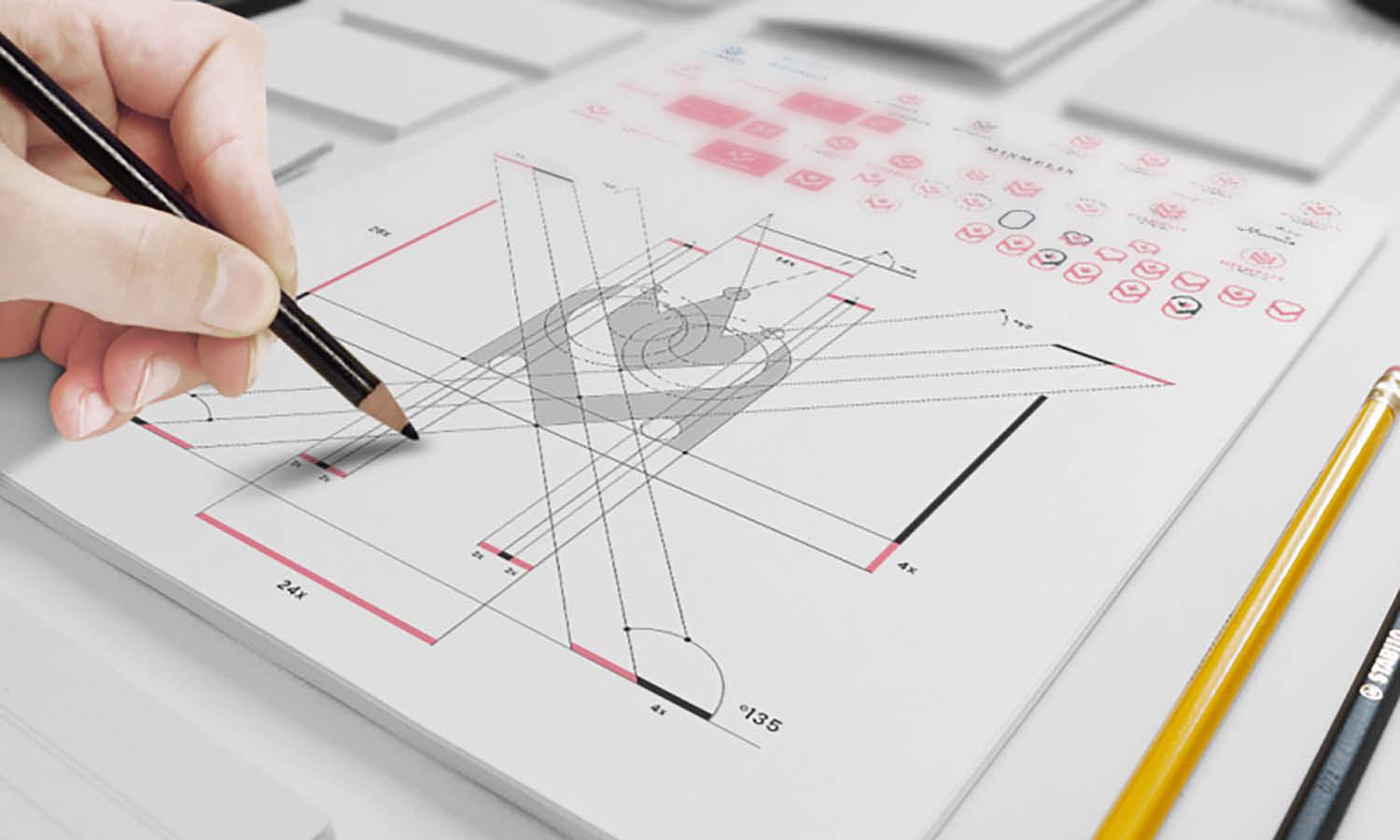How To Fix My Apple Pencil When It Is Not Working?

When your Apple Pencil stops working, it can disrupt your workflow and creativity, especially if you rely on it for detailed design work or note-taking on your iPad. This indispensable tool has become a staple for artists, designers, and students alike, offering precision that mimics a traditional writing instrument with the versatility of modern technology. However, like any device, it can occasionally encounter issues that prevent it from functioning properly. Whether it's failing to connect, not charging, or not responding to touch, there are several reasons why your Apple Pencil might be giving you trouble.
Fortunately, most problems with the Apple Pencil can be fixed through a series of troubleshooting steps. This article will guide you through practical and straightforward methods to fix your Apple Pencil, helping you get back to your tasks with minimal downtime. Let's explore the common issues and effective solutions to ensure your Apple Pencil is up and running smoothly again.
Check the Charge Level
One of the first steps in troubleshooting a non-functional Apple Pencil is to ensure it has enough charge. Often, a simple lack of power is the culprit behind connectivity and performance issues. Start by connecting your Apple Pencil to the iPad's charging port; for the first-generation model, remove the cap and insert the Pencil into the Lightning connector on your iPad. For the second-generation model, attach it magnetically to the side of your compatible iPad that supports charging.
Give it at least 10 to 15 minutes to charge before attempting to use it again. If you don't see the charging symbol appear on your iPad, or if the Apple Pencil does not show up in the Batteries widget, there may be an issue with the charging source or the Pencil itself. In such cases, try using a different power adapter and cable to ensure the issue isn't related to the power supply. Additionally, ensure that your iPad's charging port and the Pencil's connector are clean and free from any debris. A dirty or obstructed connection can prevent the charging process. Regularly checking and maintaining the charge of your Apple Pencil can prevent many of the issues associated with device failure, keeping this essential tool ready for use whenever you need it.
Inspect the Tip for Damage
Regular inspection of your Apple Pencil's tip is crucial as damage or wear can significantly affect its functionality. The tip of the Apple Pencil is particularly susceptible to wear over time, especially with heavy use. To inspect the tip, gently unscrew it from the body of the Pencil and examine it for any signs of uneven wear, cracks, or other damage. If the tip is damaged, it can lead to poor response or accuracy issues when interacting with the iPad’s screen.
Replacing the tip is straightforward: simply screw on a new one until it feels secure. Apple Pencil tips are available for purchase from Apple and other third-party vendors. Keeping spare tips on hand is a good practice, so you can replace them as needed without interrupting your workflow.
Additionally, when screwing in the new tip, ensure it’s done firmly as a loose tip can result in inconsistent functionality. However, be careful not to over-tighten, which could cause damage to the threads or the tip itself. Regularly checking and replacing the tip of your Apple Pencil not only extends its life but also ensures that it delivers the best possible performance, providing the precision and accuracy required for detailed work on your iPad.
Reconnect Your Apple Pencil
Reestablishing the connection between your Apple Pencil and iPad can often resolve issues such as unresponsiveness or intermittent functionality. To reconnect your Apple Pencil, first navigate to the Bluetooth settings on your iPad. You can find this under 'Settings' > 'Bluetooth'. Here, locate your Apple Pencil under 'My Devices', and tap the info icon next to it. Choose 'Forget This Device' to sever the connection.
After disconnecting, restart your iPad to clear any temporary software glitches that might be affecting the performance. Once your iPad is back on, reconnect the Apple Pencil by attaching it to the iPad’s charging port for the 1st generation model, or placing it on the magnetic side connector for the 2nd generation model. Wait for the on-screen prompt to appear and then tap 'Pair' to re-establish the connection.
This process refreshes the connection and can often fix underlying issues without needing further interventions. If your Apple Pencil still doesn't work after reconnecting, it might indicate a deeper software or hardware issue, necessitating further troubleshooting or professional help.

Restart Your iPad
Restarting your iPad can solve a variety of issues, including those affecting the functionality of your Apple Pencil. To restart your iPad, press and hold the top button until the power off slider appears. Drag the slider, and wait for your device to turn off completely. After about 30 seconds, turn your iPad back on by holding the top button until the Apple logo appears.
This simple step can clear out any minor software glitches and conflicts that may be interfering with your Apple Pencil's performance. It refreshes the device's internal memory and reboots the operating system, which may help in reestablishing a clean connection with your Apple Pencil. Once your iPad restarts, try using your Apple Pencil again to see if the issue has been resolved.
Restarting your device is a quick, safe, and effective way to address many common problems and is often one of the first troubleshooting steps recommended by professionals. Remember to close any open apps before restarting to ensure a smooth reboot and to prevent any unsaved work from being lost.
Update Your iPadOS
Keeping your iPad updated is crucial for ensuring all your accessories, including the Apple Pencil, function correctly. An outdated iPadOS can lead to compatibility issues that affect the performance of your devices. To check for updates, open the 'Settings' app on your iPad and go to 'General' > 'Software Update'. If an update is available, you will see an option to download and install it.
Ensure your iPad is connected to a reliable Wi-Fi network and has sufficient battery charge or is plugged into a power source before starting the update process. Updates can take some time to download and install, depending on the size of the update and the speed of your internet connection. After the installation is complete, your iPad will restart automatically.
Updating your iPadOS can fix bugs and enhance security, improving the overall performance of your device and ensuring better compatibility with the Apple Pencil. It can also introduce new features that enhance how you use your Apple Pencil with your iPad. Regular updates are a proactive step in maintaining the optimal function of your digital tools and should not be overlooked.
Check the iPad's Lightning Port
A common issue that might prevent your 1st generation Apple Pencil from working properly is a dirty or obstructed Lightning port on your iPad. To fix this, first, ensure that your iPad is turned off. Use a flashlight to look closely inside the Lightning port for any debris, dust, or lint that might be blocking the connection.
If you find any obstructions, gently remove them using an anti-static brush or a new, clean toothbrush. Be very gentle and careful not to damage the internal components of the port. Compressed air can also be used to blow out debris from the port. Avoid using metal objects or anything that could conduct electricity, as this could cause damage.
Once the port is clean, reconnect your Apple Pencil by plugging it into the Lightning port. Wait for the pairing prompt on your iPad and follow the instructions to reconnect. A clean connection can ensure effective charging and communication between your iPad and Apple Pencil, which is essential for consistent performance.
Try a Different iPad
When experiencing issues with your Apple Pencil, one effective troubleshooting step is to try using it with a different iPad. This can help determine whether the problem lies with the Apple Pencil itself or with your original iPad. Start by pairing your Apple Pencil with another compatible iPad model. For the 1st generation Apple Pencil, plug it into the Lightning port of the second iPad; for the 2nd generation, attach it to the magnetic connector on the side of the iPad.
Once connected, check if the Apple Pencil works as expected on the second device. If it does, the issue may be related to your first iPad and not the pencil. Possible problems could include software glitches, settings that need adjustment, or hardware issues with the original iPad's connectivity components. Conversely, if the Apple Pencil does not work on the second iPad either, this indicates that the pencil itself may be faulty or damaged, pointing to the need for repair or replacement.
This method not only isolates the issue but also saves time in diagnosing and fixing the problem. By confirming the device that needs attention, you can more efficiently seek the appropriate solution, whether it’s further technical troubleshooting, a visit to an Apple Store, or contacting Apple Support for advanced help.

Reset iPad Network Settings
Resetting the network settings on your iPad can resolve problems that affect how your device communicates with accessories like the Apple Pencil. This step can be particularly useful if you suspect that connectivity issues are preventing your Apple Pencil from functioning correctly. To reset the network settings, navigate to 'Settings' on your iPad, then go to 'General' and scroll down to 'Reset'. Select 'Reset Network Settings' from the options presented. You will be prompted to enter your passcode before the process can begin.
This action will erase all stored Wi-Fi networks, passwords, and any custom network settings such as VPN configurations, returning them to factory defaults. It will not delete personal data or apps. After the reset, your iPad will restart automatically. You will need to reconnect to your Wi-Fi network and re-pair your Apple Pencil as well as any other Bluetooth devices you use.
Resetting network settings is a safe and straightforward procedure that can often clear up intermittent problems caused by corrupt settings or conflicts between devices. It’s a good practice to perform this reset if you’re experiencing persistent connectivity issues, as it often restores normal operation without the need for more drastic measures such as a full iPad restore.
Restarting your device is a quick, safe, and effective way to address many common problems and is often one of the first troubleshooting steps recommended by professionals. Additionally, if you're working remotely, using an iOS VPN after a restart can ensure your connection remains secure and private. Remember to close any open apps before restarting to ensure a smooth reboot and to prevent any unsaved work from being lost.
Inspect for Physical Damage
A thorough physical inspection of your Apple Pencil is essential if it stops functioning correctly. Physical damage can affect the internal components, leading to connectivity or performance issues. Begin by examining the exterior of the Apple Pencil for any cracks, bends, or breakage. Pay special attention to the area around the tip and the other end of the pencil, where the charging mechanism is located.
If your Apple Pencil fell or was subjected to significant pressure, there might be internal damage that isn't immediately visible. Such internal damage can disrupt the delicate internal wiring and sensors that facilitate its operation. If you notice any severe external damage, it's crucial not to attempt repairs yourself, as this could void any warranties or cause further harm to the device.
For subtle issues that aren't clearly visible, such as issues with sensitivity or unexpected behavior, the damage might still be physical in nature. In such cases, handling of the device should be done with care, and professional assessment might be necessary. Keeping your Apple Pencil in a protective case when not in use can prevent many types of physical damage and extend the life of your device, ensuring it remains a reliable tool for your creative and professional tasks.
Visit an Apple Store
If troubleshooting your Apple Pencil at home does not resolve the issue, visiting an Apple Store or contacting an authorized Apple service provider might be the best course of action. The technicians at Apple Stores are equipped with the tools and expertise to diagnose and fix any problems your Apple Pencil might have. When preparing to visit, ensure that you bring your iPad and Apple Pencil along, as the problem might not solely lie with the Pencil itself.
Upon arrival, describe the specific issues you are experiencing with your Apple Pencil. The more details you provide, the easier it will be for the technicians to understand the problem and find a solution. If your device is still under warranty, or if you have AppleCare+, you might be eligible for a repair or replacement at little to no cost.
If a visit to the store is not immediately possible, consider using Apple's support website to start a service request or to chat with a support representative online. This preliminary online consultation can often help diagnose the problem and determine if an in-store visit is necessary. Regardless of the route you choose, professional help is a reliable way to ensure your Apple Pencil is restored to full functionality, allowing you to continue creating and working without significant interruption.
Conclusion
Fixing an Apple Pencil that isn't working can often be achieved through a few straightforward troubleshooting steps. From ensuring it is fully charged to inspecting it for physical damage, each method plays a crucial role in resolving common issues. If these steps do not restore its functionality, seeking professional assistance at an Apple Store is your next best option. Remember, proper care and regular maintenance are key to prolonging the life of your Apple Pencil, ensuring it remains an effective tool for all your creative and professional needs.
Let Us Know What You Think!
Every information you read here are written and curated by Kreafolk's team, carefully pieced together with our creative community in mind. Did you enjoy our contents? Leave a comment below and share your thoughts. Cheers to more creative articles and inspirations!
















Leave a Comment